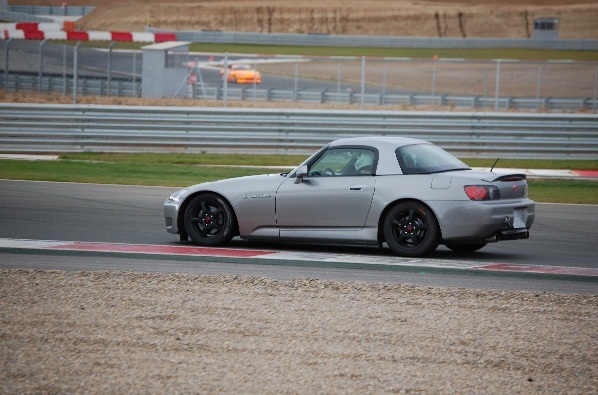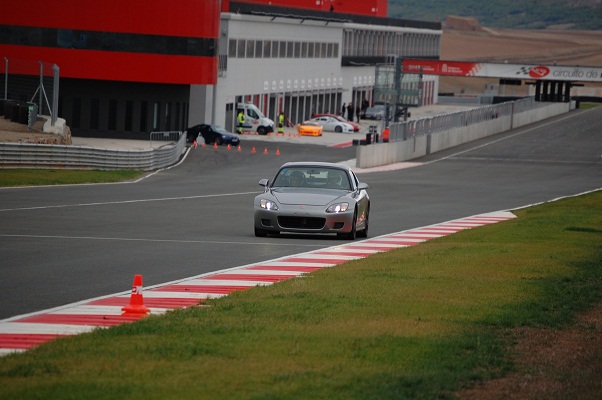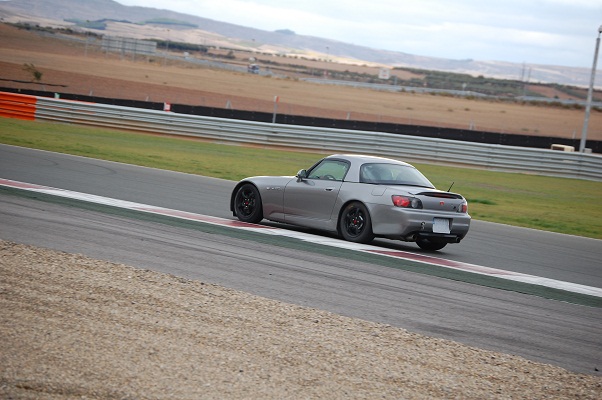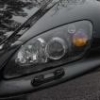Muy buenas,
Bueno, como tenemos metido este post en el FAQ como "Recomendaciones y material para primera entrada a circuito", añado ésto aquí:
Seven Things I Learned in my First Season of Autocrosshttp://www.motoiq.co...-autocross.aspx7 Things I learned in my First Season of Autocross
Fly'n_Z posted on March 21, 2012 00:00

Seven Things I Learned in My First Season of Autocross
By Vince Illi
I’m waiting with bated breath for my first autocross event of the year. This has led me to think back on what I learned during my first season of autocross last year. Obviously my experience was with autocross, but a lot of these tips apply to road courses, as well.
Your Car is More Capable than You Think
This won’t be a shock for anyone who actually races cars, but if your only experience in motorsports has been accelerating in a straight line for a quarter mile or so, you really have no idea what even a “basic” vehicle is capable of. I read once that the average driver would rather veer off the road than pull a 0.4-G turn. Even your average, run-of-the-mill econobox is capable of nearly double that in lateral acceleration.

So it was quite a shock to me when I started racing in autocross. A car is capable of much, much more than what it routinely does during street driving. As an example, take your vehicle out to an empty parking lot or deserted back road, drive up to about 25 MPH, and then stand on the brakes. I’m willing to bet if you’ve never done this before you would be surprised just how quickly your car will stop, especially if it’s equipped with antilock brakes. Likewise, your car is capable of carrying much more speed through a turn than it (legally) does on most roads. To put things in perspective, I was 20-25 seconds behind the average time during my first autocross, simply because I was still driving the vehicle like I was on the street! (I also felt I was going ludicrous speed and would go to plaid if I went any faster.)
Get Your Tire Pressures Right
Invest in a good, accurate tire pressure gauge. Start out by adding more pressure than you normally would run on the street. The fast transitions of autocross are murderous on your tires, so you want those sidewalls as firm as possible without causing the car to skate around. For reference, I run between 34 and 36 PSI on the street. At autocross, I run 40 PSI on the fronts and 38 PSI on the rears.

Sitting on the grid between runs is when you should experiment with tire pressures.
Learning to “read” your tires will help you get the tire pressures right. I had the luxury of using brand-new tires at one of my events. The tires were so new that they still had the “nubs” on them left over from the manufacturing process. After two runs, I noticed that the nubs were worn off the front tires, but not the rears. In other words, my rear tires were being under-utilized. I fixed this by dropping the rear tire pressure by 2 PSI.If you aren’t running brand-new tires, you can read how they are being used by using chalk or an infrared thermometer. To use the chalk method, scribe a line on your sidewall from the wheel rim straight outward to the tread. After one run, look at the chalk line. The amount of it that is rubbed off will show you how much of your sidewall is being folded under during hard cornering. If a lot of the line is rubbed off, increase the tire pressure.
The infrared thermometer method is much more accurate. Immediately after a run, take temperature measurements of the outside, middle, and inside of a tire’s tread surface. Ideally, the temperatures should be approximately equal. A tire that is being utilized will be hot. So, if the center is hotter than the edges, the center of the tire is being utilized more, which means your tires are over-inflated. The opposite (edges hotter than the center) means your tire is under-inflated. If one edge is hotter than the other, your camber needs to be readjusted.
Be Smooth
Once you get past the mental block of pushing a vehicle to its true limits, you have to begin working on actual driving techniques. The first one to focus on is smooth transitions. All inputs to a car, whether they be steering, braking, or throttle, should be “eased” into. Being smooth in these transitions helps you prevent over application of steering, braking, or throttle, which will in turn require correction halfway through the corner, scrubbing off your speed.

Play in the Rain
Someone once said to me that a wet event was worth three dry ones. He couldn’t have been more correct. Remember the previous point? Be smooth. Racing in the rain forces you to be smooth, because if you’re not, you’ll probably spin out. Wet events also lower the “limits” of your vehicle, enabling you to more easily explore how your vehicle handles near those limits.

If you’ve never raced on a wet surface before, take the opportunity to push you car to the absolute limits. Don’t be afraid to spin out, because you’ll learn how your car feels at the very limits of traction.
Modify the Driver before the Car
After getting a few events under your belt, the temptation is strong to run out and bolt on coilovers and adjustable sway-bars and throw your interior into the dumpster. But this leads to the Dark Side, young Padawan. If you do anything to your car, get some better wheels and tires. But don’t start modifying anything else until you know what needs to be modified. And you won’t know what needs to be modified until you’ve driven enough to know what your car’s weaknesses are as opposed to your weaknesses. Does your car understeer like a drunken Subaru? Is it your car’s fault, or is your driving to blame?

Lightweight wheels and stickier tires let a car reach its full potential but won’t significantly alter its handling dynamics.
Know the Course
This applies to all forms of racing but even more so to sports like autocross where the course changes every event. In autocross, walk the course as many times as possible. Try to know the path through the course without thinking. This lets you drive more “naturally” and proactive during your heats, instead of having to think about what the next turn is and react accordingly. Knowing what the next corner is allows you to approach turns in groups instead of one at a time. While you’re walking the course, try to walk the racing line that you will be taking through the course to help burn it into your memory.

The course walk is one of the most important parts of getting a good time! Knowing the course lets you be proactive instead of reactive.
Look as Far Ahead as Possible
During one of my early autocrosses, I had the opportunity to have an SCCA instructor ride with me. After half a heat, he saw my problem: I wasn’t looking far enough ahead. On the second run, he literally yelled at me and pointed where I should be looking!
This took me the longest to learn and made the biggest difference in my times. You should never look at the turn you are currently navigating. In fact, you probably shouldn’t even be looking at the next one. You should be looking two or three turns ahead of you. If you are going around a long, right-handed sweeper, your head should be turned over your right shoulder and looking out the passenger-side window at what is coming up next. The reason for this is simple. By looking several turns ahead, your brain begins to naturally connect the different corners together, which makes it vastly easier to find the best line through the corners, which makes you smoother and thus faster.

I distinctly remember this course. This was a long, right-handed sweeper. You can’t see because of the guy in my passenger seat, but my head is turned over my right shoulder to view the “exit” of the turn. I am practically looking out that rear quarter window.
So, what things do I need to work on this year? Well, first of all, I have to admit that I probably wasn’t pushing the car quite as hard as I could. (I was slightly afraid of breaking something.) But something I want to do a lot more of is having experienced (and even less-experienced) passengers ride with me to give me their input. Input from fellow drivers is very valuable; they will see things wrong (or right) with your driving style that you won’t. Riding with other drivers during their heat is just as valuable and is also something I plan to do more of. I’m also going to try to attend an autocross driving school and maybe take the Mustang out on the road course for the first time at Summit Point…

Me ha parecido muy interesante para meterlo aquí.
Editado por Storm, 22 March 2012 - 16:33:32.










































